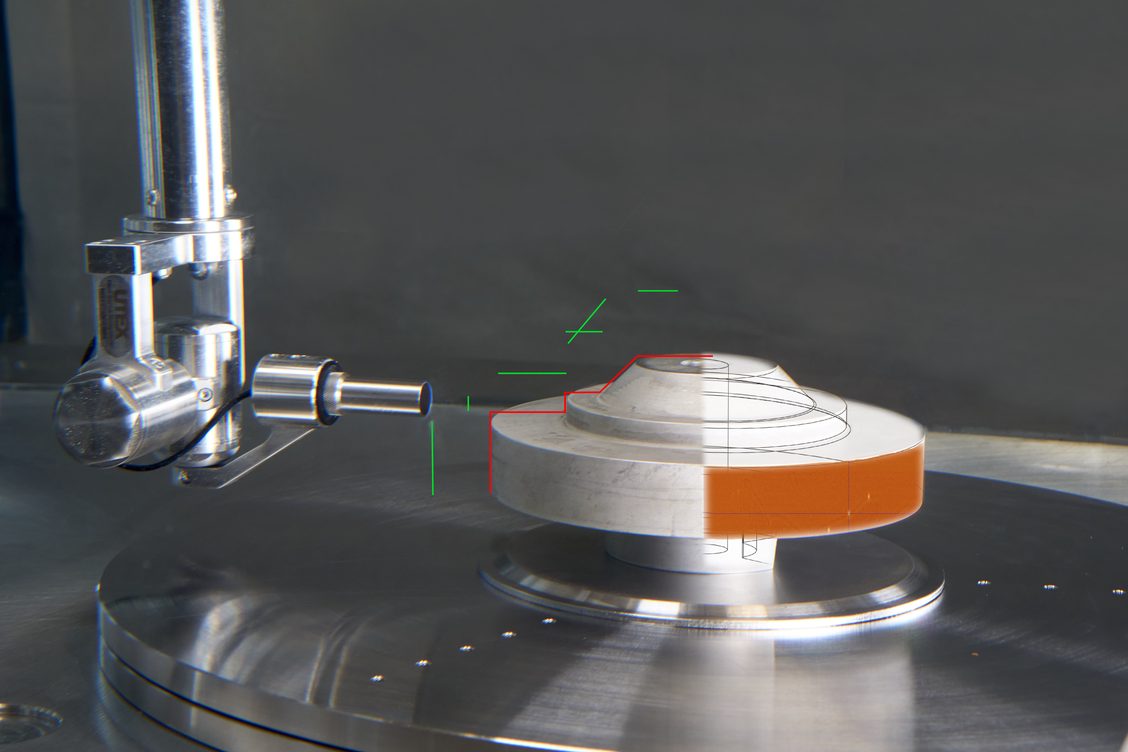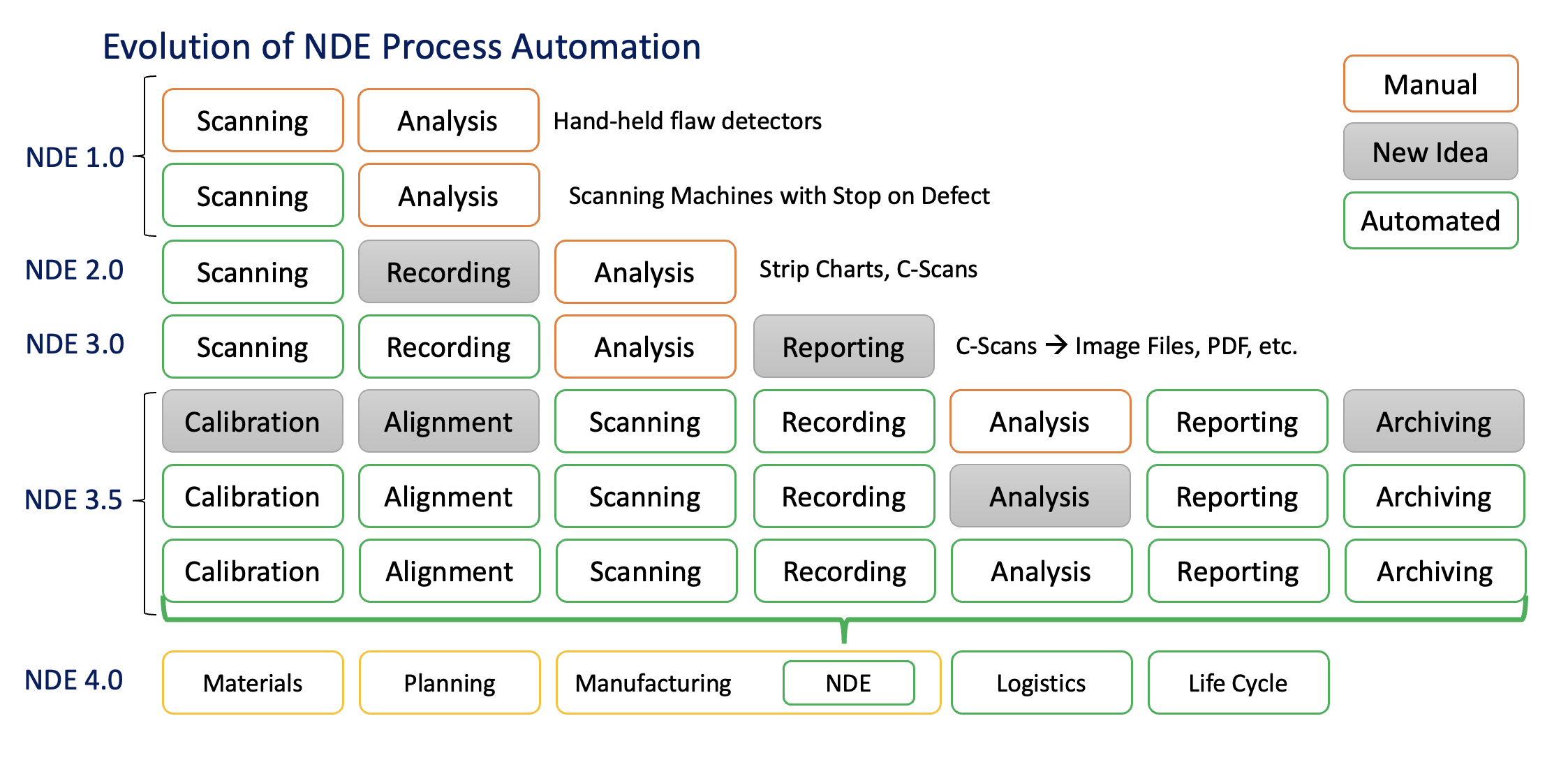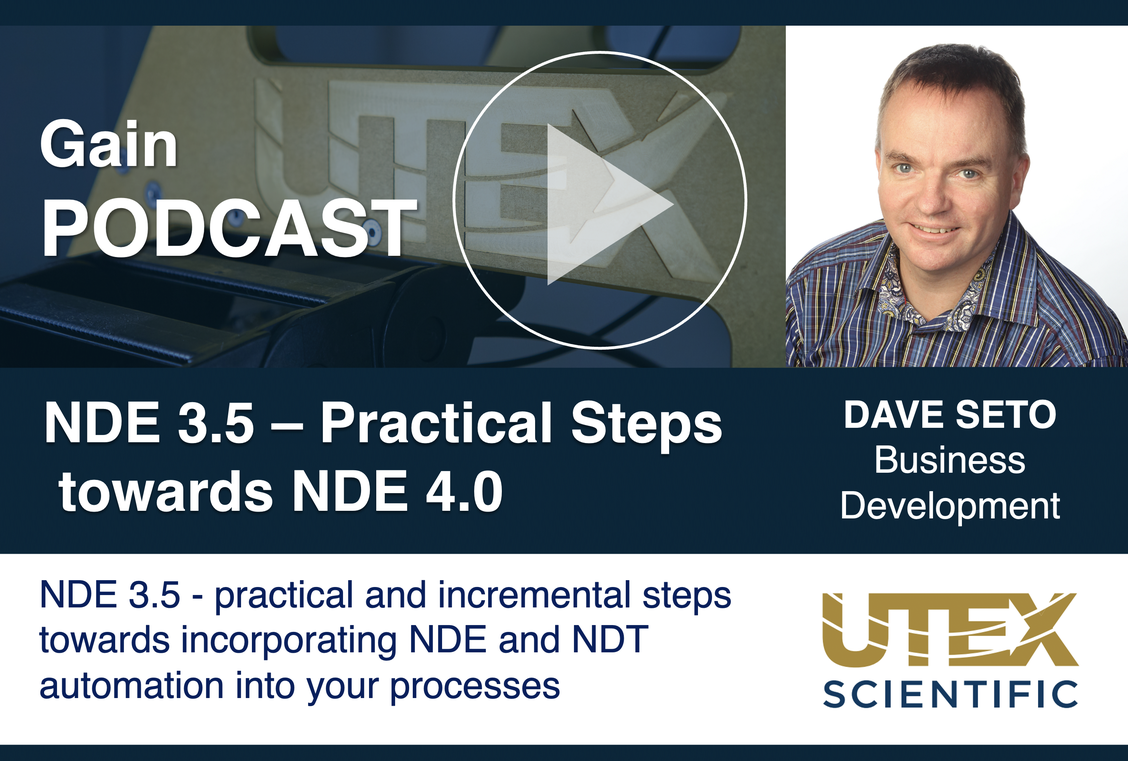Taking the First Step Towards NDE 4.0
Part 2: Increase Efficiency and Repeatability through Automating Calibration and Alignment

In this second article on the topic of NDE Automation, we will discuss the tasks of calibration and alignment, with respect to the automation of a nondestructive evaluation process.
The word calibration can cover a wide range around the basic idea of ensuring that the instruments and equipment are fit for use in the upcoming inspection. For our context of NDE automation, we will assume Therefore for the purposes of our discussion today, calibration means verification of the configuration of the instrument.
When calibrating the NDE system before an inspection, we need to verify that the instrument settings, probe type, scan settings, and other operator inputs have been correctly configured to ensure the highest probability of detection. Within that framework, we add alignment to the calibration criteria, because correct alignment of the probe to the material under inspection is critical to the success of the inspection. Incorrect alignment will undermine the detection capability of an otherwise correctly configured instrument and probe.
Calibration typically involves scanning a reference standard containing known indications, to show that the current configuration is capable of detecting flaws of similar size, shape and depth within the material and in accordance with any applicable standards or specifications. Automation of the setup and calibration process can help us in a number of ways:
- Accelerate the process, thus increasing productivity.
- Eliminate errors in setups and prevent invalid scans from wasting time.
- Validate the inspection scan data with reference data for every inspection.
- Document the calibration for traceability and audit purposes.
In an NDE 2.0 – analog or manual – inspection process, the calibration is manual, and there is usually only a documentation of the calibration date, but no data recorded to show the result. In an NDE 3.0 – digital – inspection process, the calibration may be semi-automated, and the results may be documented, but they are not necessarily associated with the data files from the subsequent inspections. Adding a few simple automation steps to the existing calibration process, provides a number of significant benefits - what we have begun calling NDE 3.5.
- Use a configuration library
Even complex multi-channel systems can be rapidly set up and ready for calibration, if the inspection configuration can be saved and then recalled. It is common with modern NDE instruments to load a complete configuration including instrument settings, gate settings, and TVG/DAC settings. Automated recall of the saved configuration enables fast and repeatable scan setups and ensures that the correct configuration is loaded every time, based upon the product that is to be inspected. Through use of automated recall the time invested by the NDE System operator to prepare for the calibration scan, and the subsequent product inspections is reduced to nearly zero.
- Automate the calibration test
Building the reference standards into the scanning system, and automating the calibration scans, allows for easy and repeatable calibration scans. Automation in this process enables frequent calibration scans, providing more assurance of the system’s readiness while minimizing the time spent.
Checks for alignment can be automated and provide value even for NDE systems where the parts are uniform and the probe-to-part alignment is nominally fixed. Mechanical wear, collisions during loading and unloading, and normal exchange of probes are all opportunities for misalignment to occur.
In a scan for alignment taking only a few seconds, the system can verify that it has the correct probe, water path, part placement and centering, surface alignment.
- Document the calibrated configuration
Modern NDE software and instruments are easily capable of embedding their settings within their data files, providing unequivocal documentation of the instrument configuration at the time the scan was performed.
A simple but valuable step further is to save the data from the scan of the calibration reference standard. The reference scan data file will show that the system was not only configured as specified, but that this calibrated setup achieved the required result – the sensitivity to the inserted defects in the reference standard will be documented in the scan data. It is also trivial for NDE automation software to associate the reference standard scan data with the relevant production inspection data. In some cases, the reference standard’s data can even be embedded within the data file for the product inspection.
It is relatively simple to automate the process of scan setup and calibration verification for an NDE system that is already using machines and software to perform the scan. These innovations have their own inherent value, even if you do not intend to implement NDE 4.0 – the full integration of NDE systems and processes within the automated factory. Automation of setup and calibration provides speed and repeatability to often tedious and sometimes error prone tasks or preparing to do the work of inspecting components. Having the data from automated calibration scans makes it easy to monitor the performance of the NDE system, and to respond with confidence to client audits.
If you do plan to eventually implement towards NDE 4.0 levels of integrated automation, the automation of calibration process, and the sharing of the resulting verification data are necessary building blocks towards operating within an NDE 4.0 regime.

Image adapted from: W. Weber, D. Mair, D. Jansen, L. Lombardi , ’Advances in Inspection Automation’
QNDE Proceedings, 2009
Our next post will explore how automated data archiving can increase the robustness of your quality program, ease auditing, and set your processes up for the next stage of automation.
Interested in learning more about NDE 3.5? Listen to NDTnow.com’s podcast GAIN, featuring UTEX’s Dave Seto.

More in "Taking the First Step Towards NDE 4.0" series
|